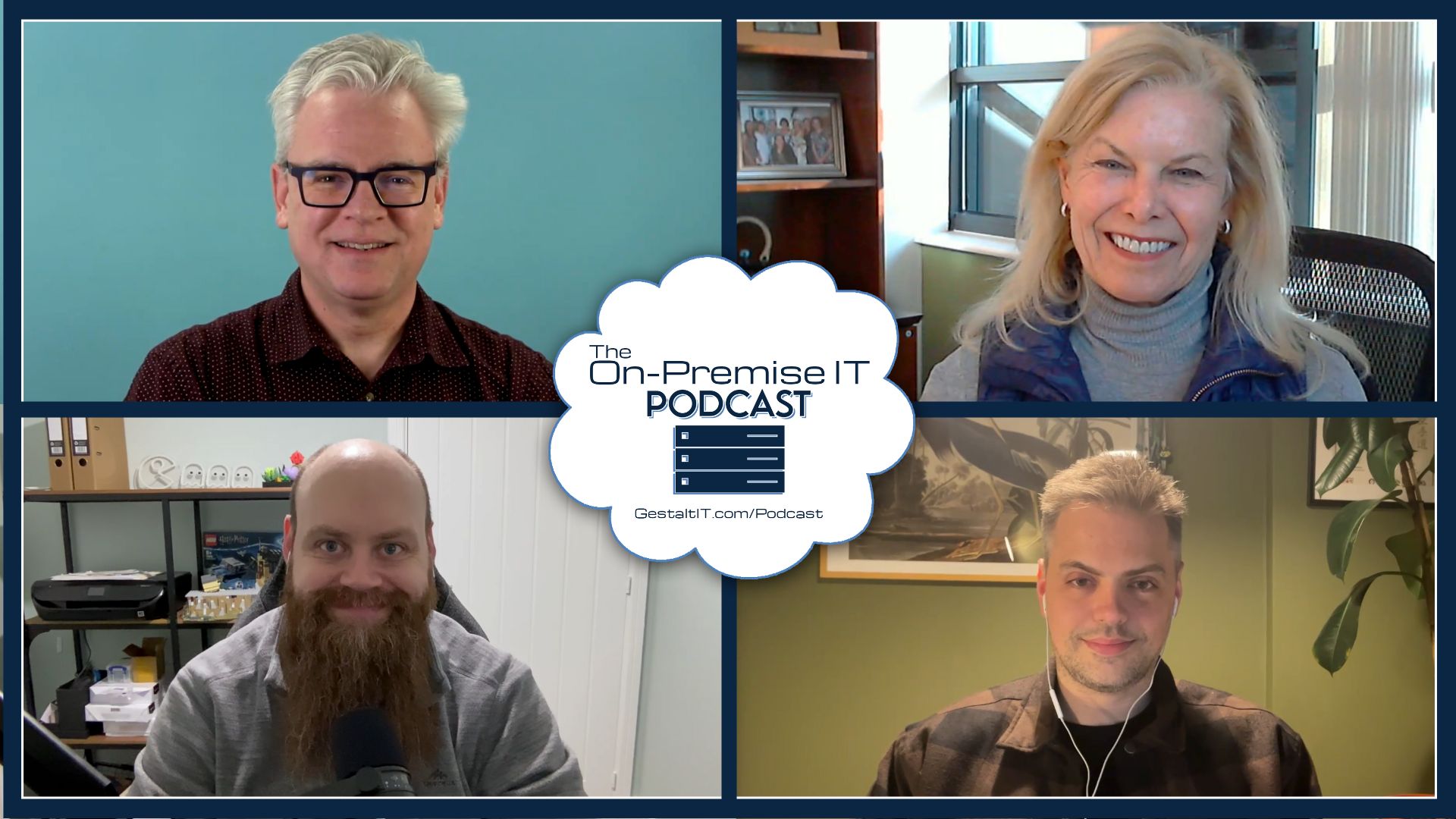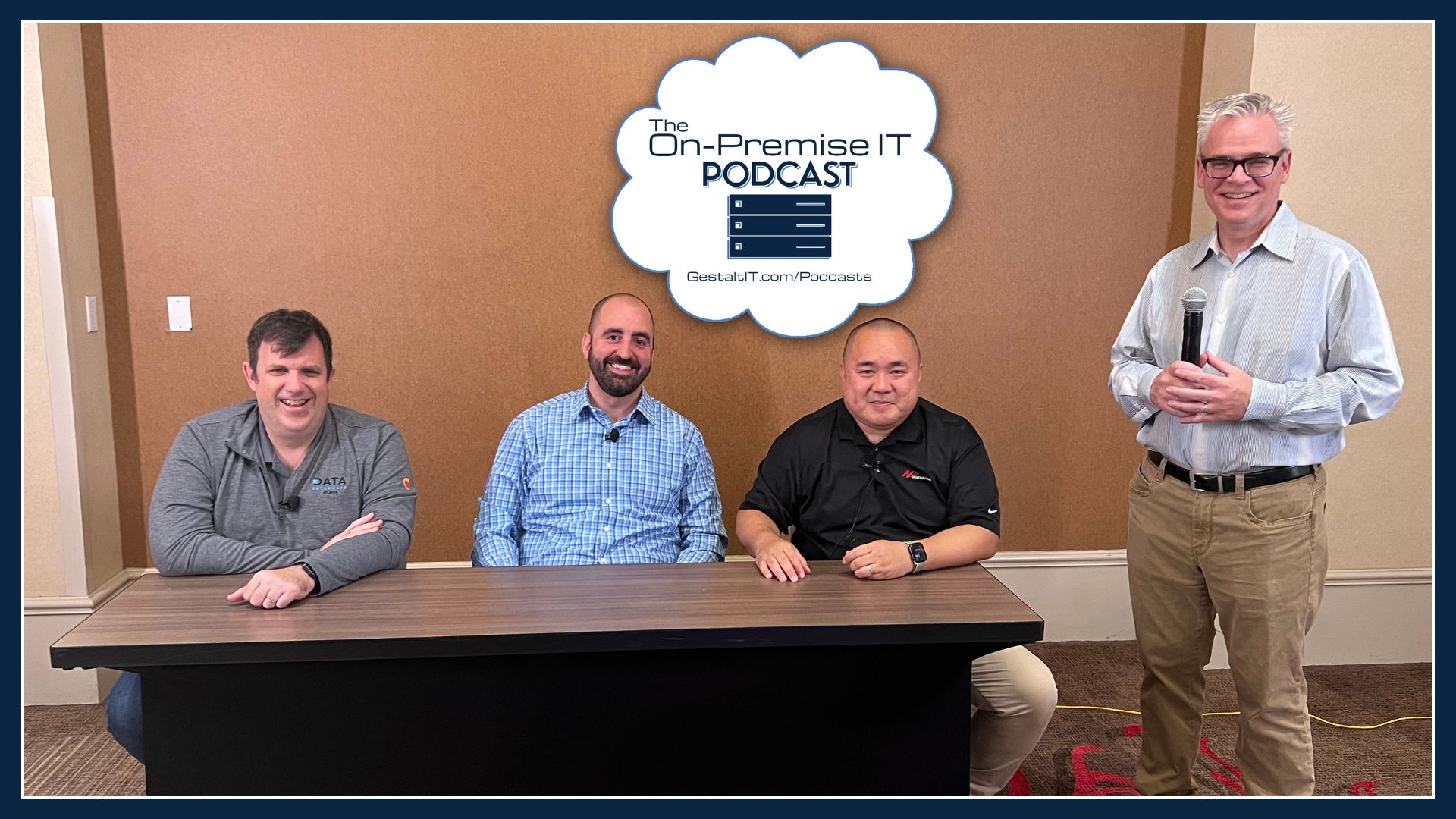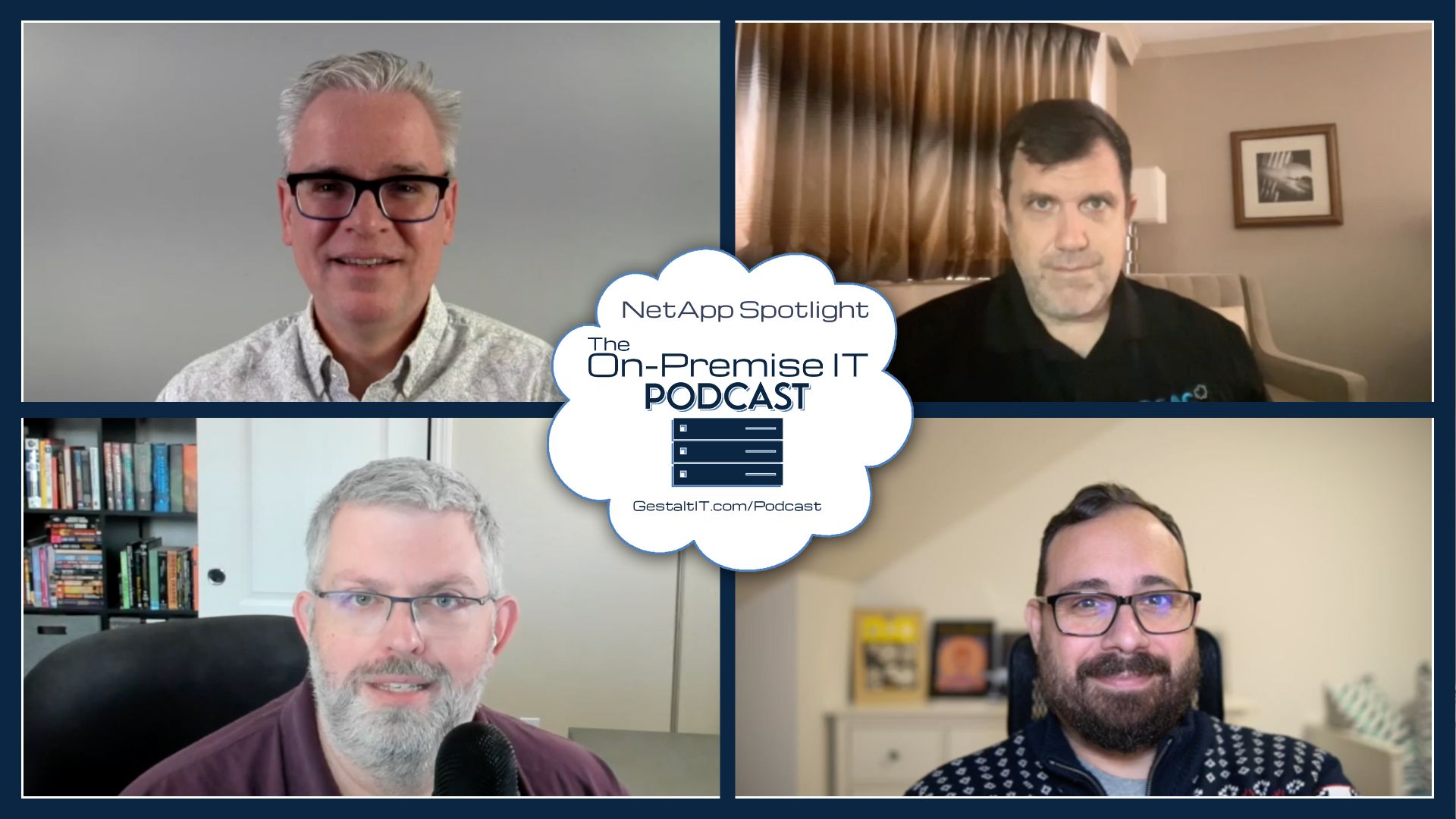Enterprise IT is constantly oscillating between centralized and distributed, and we’re currently in a period of repatriation of workloads from the cloud. This episode of the On-Premise IT podcast features three delegates from Cloud Field Day 17, Joey D’Andoni, Eric Wright, and Jason Benecicic, discussing the reality of repatriation of cloud applications with Stephen Foskett of Gestalt IT. Pundits constantly tout the money they save by repatriating from public cloud, but this might not be the best choice especially for smaller organizations. The only way to ensure functionality between on-prem, hybrid, and public cloud is to use them and use each where it is the best solution. Repatriation is especially challenging for today’s SaaS-oriented businesses, since most of these solutions can’t be run on-prem. But even workloads that can be run outside the cloud will likely require re-architecting to run locally. Yet many companies are developing software to ease the transition to and from the cloud, and these make it much easier to repatriate.
Finding the Cloud’s Sweet Spot: Navigating Workload Challenges and Unleashing the Power of Hybrid Solutions
Enterprise technology has witnessed a pendulum swing between centralized and distributed models, with the cloud representing a distributed approach. However, challenges persist in determining the suitability of cloud for different workloads, considering factors like performance and cost profiles. This has prompted a reevaluation of the cloud’s effectiveness for certain applications.
Early cloud adopters often faced the realization that their expectations of cost savings and architectural understanding were not always met. This led to a shift back to on-premises environments. However, technological advancements have reignited the assessment of the cloud’s true cost-effectiveness, highlighting the ongoing challenge of predictability that software solutions have yet to fully address.
The initial allure of cloud services was driven by the expertise and offerings of major providers like AWS and Microsoft, which catered to specific purposes and modern workloads that organizations couldn’t handle internally. Over time, hardware advancements and distributed skill sets made running workloads in the cloud more manageable. However, challenges arise when evaluating the benefits of on-premises solutions, particularly for technology-focused organizations with substantial investments and engineering staff.
The polarized narrative of being exclusively “all-in” or “all-out” of the cloud fails to recognize the value of hybrid models and the nuanced decision-making required for different workloads and architectures. It is crucial to move beyond trends and focus on evaluating applications and workloads based on their specific needs, using sensible and proven approaches.
The cloud offers flexibility, burst capacity, and programmable workload deployment, making it suitable for certain tasks. Instead of abandoning the cloud solely based on cost considerations, organizations can adopt a hybrid approach, strategically choosing which workloads are best suited for on-premises environments and which benefit from the cloud’s capabilities.
To optimize cloud adoption, organizations must continuously evaluate their strategies, leveraging tools and evaluating cost models to determine which workloads may be better suited for on-premises environments. Challenges related to storage performance, costs, and capturing accurate metrics must be addressed to ensure cost-efficiency and predictable outcomes.
The perception of the cloud as “broken” often stems from human decisions and reluctance to deviate from established practices. Embracing advancements in self-service, automated provisioning, and comprehensive analytics can help organizations overcome these challenges and fully leverage the benefits of the cloud.
As organizations continuously revisit their cloud strategies, the focus should remain on evaluating specific workload needs, leveraging the strengths of the cloud, and incorporating practical solutions. The industry must prioritize teaching the new generation of technologists the nuances of selecting the right tools for the job, ensuring that cloud adoption decisions align with business objectives and generate significant returns.
Finding the right balance between on-premises and cloud-based solutions remains a critical task for enterprises. It requires a nuanced approach, considering workload requirements, cost-effectiveness, performance, and scalability. By embracing hybrid models, leveraging cloud strengths, and making informed decisions, organizations can navigate the complexities of cloud adoption and unlock the full potential of modern enterprise technology.
Join our panel at Cloud Field Day 17 this week, live streamed on LinkedIn, or watch the recordings in the Tech Field Day YouTube Channel!
Podcast: Play in new window | Download (Duration: 38:14 — 43.8MB)
Subscribe: Apple Podcasts | Spotify | Amazon Music | RSS | More
On-Premises for Today’s Podcast:
Panelists
Eric Wright
Joey D’Antoni
Jason Benedicic
Moderator
Stephen Foskett
Follow us on Twitter! AND SUBSCRIBE to our newsletter for more great coverage right in your inbox.




